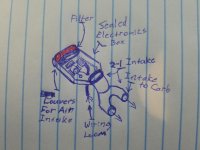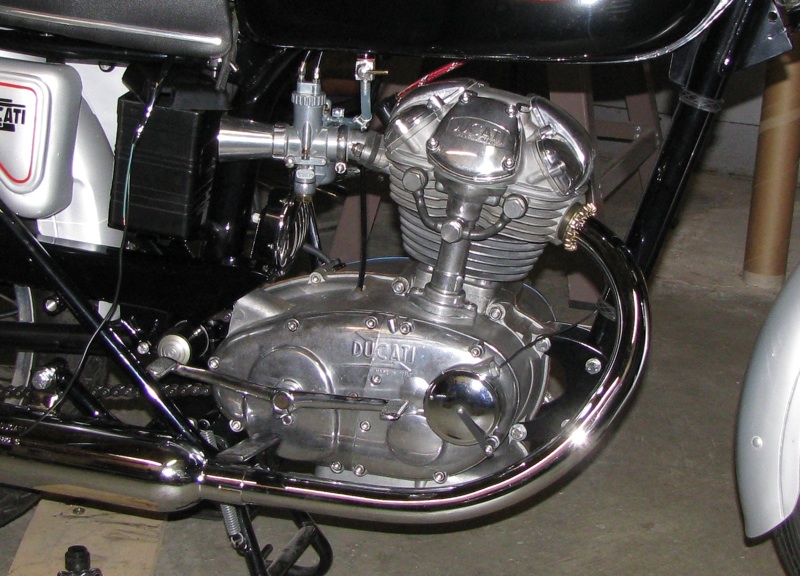CupidsDeathDay
Been Around the Block
So i don't know if this is a new concept, as i could not find anything in the forums or anywhere else on this topic. But based on your opinions, what are your thoughts?
I am working on creating an air box that holds my electonics inside.
So it would essentially be protecting the electronics from the outside elements, and i can hide my filter(s) at the same time. While still remaining accessible to the user under the seat.
I attached a quick drawing of what i am referring to.
This concept may also work with a single/dual Pod filter instead of an oval filter.
Pros that i can think of:
1. Protected from elements like dust, water, etc.
2. No need for stock air box/filters.
3. Adjustability of airflow for tuning purposes.
(Ex. Adding/removing/closing off holes or louvers. Or in the case of the pods; Place a restrictor on the intake ports at the filter or add an adjustable rotating restrictor where the box meets the 2-1 adapter)
4. Air flow into the Carbs from the rear of the bike will be cooler than being right behind the engine.
5. Air flow from the rear intake will travel across the electronics to keep them cooled.
6. Air flow will be smoother or less turbulent, when incoming to the Carbs.
But what are the cons?
What are your thoughts?
I am working on creating an air box that holds my electonics inside.
So it would essentially be protecting the electronics from the outside elements, and i can hide my filter(s) at the same time. While still remaining accessible to the user under the seat.
I attached a quick drawing of what i am referring to.
This concept may also work with a single/dual Pod filter instead of an oval filter.
Pros that i can think of:
1. Protected from elements like dust, water, etc.
2. No need for stock air box/filters.
3. Adjustability of airflow for tuning purposes.
(Ex. Adding/removing/closing off holes or louvers. Or in the case of the pods; Place a restrictor on the intake ports at the filter or add an adjustable rotating restrictor where the box meets the 2-1 adapter)
4. Air flow into the Carbs from the rear of the bike will be cooler than being right behind the engine.
5. Air flow from the rear intake will travel across the electronics to keep them cooled.
6. Air flow will be smoother or less turbulent, when incoming to the Carbs.
But what are the cons?
What are your thoughts?






